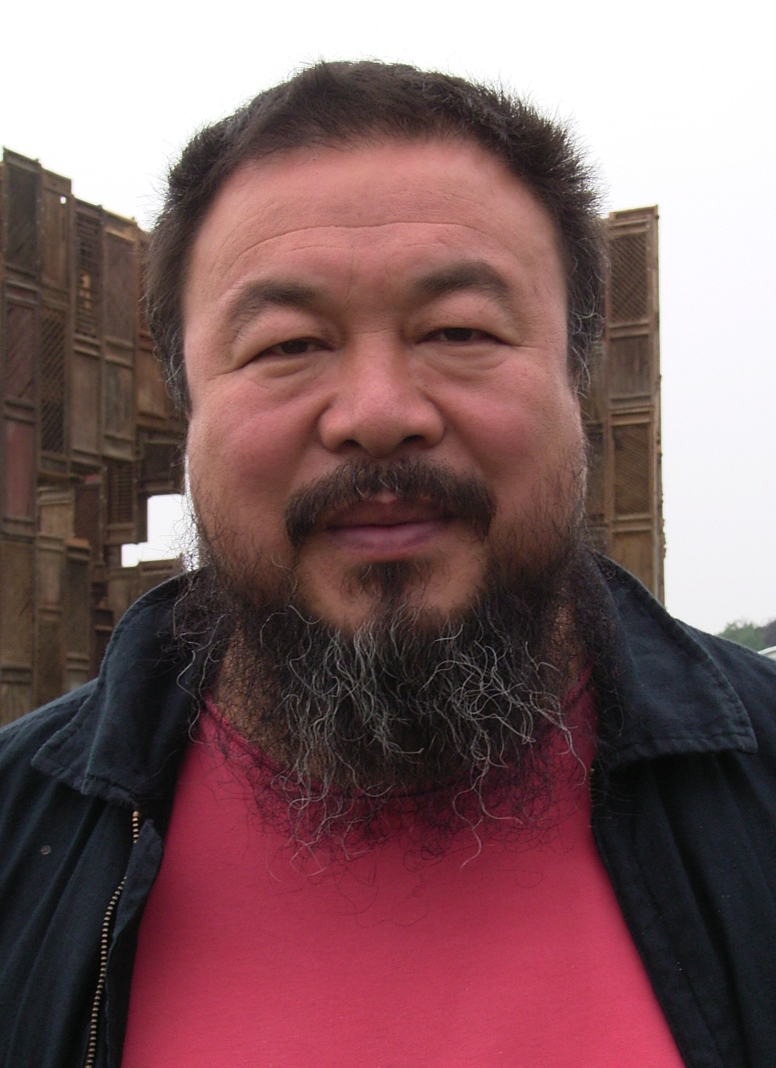Ai's father (who died in 1996) was a poet, deeply patriotic but of suicidal tendencies, since he was sent to a "re-education" camp in the far west of China despite his support of the Communist régime. The family returned to Beijing in the 1970s but most of the boy's childhood (Ai Weiwei was born in 1957) had been spent in exile. In 1979 he was one of the Xingxing artists ("Stars"), outsiders denied exhibition space in the China Art Gallery, so they hung their pictures on the fence outside, saying: we demand democracy and artistic freedom! Their works tended to be surrealist, cubist, in style instead of the social-realist paintings preferred by the authorities. In 1983 they were disbanded and dispersed, Ai being the first of them to emigrate––he moved to New York, lived in the then un-gentrified Lower East Side, talked a lot and smoked pot. "Act up!" was his motto. His hero was Marcel Duchamp––the subject of his Profile of Duchamp, Sunflower Seeds (1983)
Ai Weiwei is no new phenomenon but the latest in a long line of rebellious Chinese artists dating back to the 12th century and earlier. Some "literati" painters of the Song Dynasty were also dissidents. In that meritocratic society, the Chinese civil service examinations included painting and caligraphy with the brush. Mi Fu belonged to the intellectuals. He, like Ai Weiwei, collaborated with others to create his works of art. Su Shi (whose statue I saw in Hangzhou) was exiled for his implied criticism of the government of the day. These were free spirits, not servants of the Emperor. After the conquests of Kublai Khan, southerners were treated with suspicion and had to wait for the right moment to step forward. Zhao Mengjian's 13th century flower paintings (of the early Yuan period) have political connotations. Like the artist's family, the narcissus he painted had no roots. "Three Friends in the Cold Season" (a pine twig, plum blossom and bamboo leaves, painted in ink) represented those who had no friends among the Mongols. They are plants that bend but do not break and that live through punishment, surviving the winter. Ming Tiampo also commented on Gong Kai's "Emaciated Horse"––a picture from the Yuan Dynasty and an obvious comment on the artist, who had to get by on minimum rewards.
Silence, in Ai Weiwei's opinion, equals death, therefore he keeps on commenting. In his "Study of Perspective" photographs (1995-3003) he gives Tiananmen Square the finger, and the Eiffel Tower, the White House, Hong Kong, the Mona Lisa ... In 1995 there also appeared a photo triptych of him "Dropping a Han Dynasty Urn" (that he'd picked up cheap at a flea market!), a symbolic comment on the destruction of history that shocked the world. Chairman Mao's view was that "we can destroy the old world but build a new world"; Ai Weiwei wants, rather, to bridge the two worlds. In 2007 he made "Coloured Vases", for example painting a Coca Cola logo on a real, neolithic, Yangshao urn. Is this a tongue in cheek comment on the commercialisation of art or something angrier? According to Ming Tiampo, he is patriotic. His "Table with Two Legs on the Wall" (2008) was made from disassembled and re-assembled Qing Dynasty furniture. His "Map of China" is from recycled rosewood.
The famous Bird's Nest Stadium in the Beijing Olympic Park is his crowning achievement to date, created with the approval of the government in collaboration with Swiss architects. Ai didn't approve of the "fake smile" of the Olympics so withdrew from the public gaze and became suspect again when he began documenting the Sichuan earthquake which probably killed 90,000 people. He called his work the Citizens' Investigation Project, displaying the names of 5000 school children lost in the earthquake as a result of shoddy "tofu" construction of their schools. On August 18th in Toronto, this year, their names will be read aloud. (This has also occurred at the Hirshhorn Museum in Washington.) The exhibition at the AGO will show his "Snake" on the ceiling, made of the children's backpacks. It has a threatening look.
In 2009 Ai was arrested and detained by the Chinese police. He managed to take a photo of himself using his cellphone as he was being taken for interrogation in a lift and to publish the picture there and then, via Twitter, on the world wide web. In 2010 he needed emergency brain surgery as a result of his treatment and took and published photos of that process as well. His Shanghai studio, that broke all the rules, was due for demolition in November 2010 so he threw a party there the previous day. A film ("Never Sorry") was made after this, to thank the people who had sent him money in support. Art galleries in China are often foreign owned and his work is shown there. In April 2011 he disappeared for a while, but resurfaced under house arrest. He blogs and twitters constantly, sometimes playing the fool on video (for a serious purpose) or being rude in general.
He has publically named the man who beat him up in detention and has posted photos of him on the Internet. In answer to a question from the audience, Ming Tiampo assured us that Ai Weiwei is not going away. Another member of the audience took a look at his Tweet of the day and read it out to us:Human rights activists and journalists in Hong Kong believed that Ai offered himself to the authorities on a platter with this provocative art. (Wikipedia)
There are no outdoor sports as graceful as throwing stones at a dictatorship.



No comments:
Post a Comment